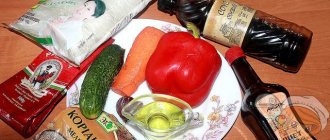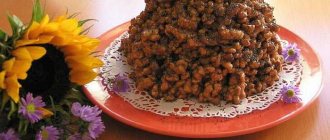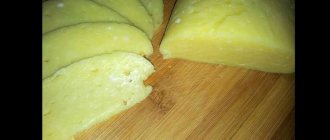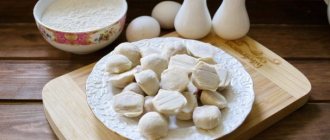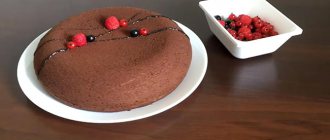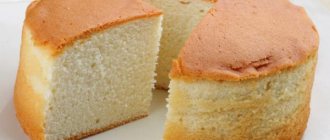The benefits of fermented milk products for the body are difficult to overestimate. And if they are made at home from fresh products using live sourdough, then they are priceless for health. Natural yoghurts normalize digestion, strengthen the immune system, and promote better absorption of vitamins and minerals. Yogurts prepared at home according to our recipes do not contain starches, dyes, preservatives, sugars or stabilizers. In this article you will learn how to make homemade yogurt. You can change the recipe and independently control the fat content and taste of the final product.
How to make homemade yogurt and what you need for it
To make yogurt, you will need milk, yogurt starter and clean dishes in which the fermented milk drink will mature. It is recommended to take boiled or pasteurized milk with a fat content of at least 2.5%, and preferably 3.2–4%. Be sure to boil village milk, but store-bought milk can simply be heated to the desired temperature.
Some housewives have even tried diluting powdered milk for yogurt, and it also turns out well. If you want the yogurt to be thicker, keep the milk on the stove for 3-4 hours so that it barely boils - during this time the excess moisture will evaporate and the product will acquire a creamy consistency.
Next, cool the milk until warm or, conversely, warm it up if it was in the refrigerator.
Add the starter, mix well and pour into prepared fermentation containers. It is best to mix the starter with a small amount of milk and only then pour it into the remaining milk, otherwise lumps may form.
To properly prepare yogurt, you need to maintain the milk temperature at 40 °C for 6–12 hours. If the milk cools down, the bacteria will stop multiplying, and if it is too hot, they will die altogether. That is why it is better to use a yogurt maker or multicooker, in which you can maintain a constant temperature for a long time. Remember that the dishes should be doused with boiling water or boiled to kill pathogenic microflora, otherwise you may not like the taste of yogurt, and it will not be stored for long. After the yogurt is cooked, be sure to refrigerate it to thicken and richen it.
What is sourdough made from?
You can buy starter for homemade yogurt in a supermarket or pharmacy in liquid or dry form. “Live” starters are not stored for long, unlike dry ones, a maximum of 20 days. Dried bacteria, when properly stored, thrive throughout the year. The starter is a mixture of Bulgarian or acidophilus bacillus, thermophilic streptococcus and other bacteria that begin to multiply intensively once in milk. The starter contains lactobacilli, which destroy pathogenic microflora in the intestines, and calcium, which is beneficial for bones and teeth. The most popular starter cultures are the probiotics “Simbilakt”, “Vitalakt” and “Acidolakt”, starter cultures from Vivo “Streptosan” or “Bifivit”, as well as acidophilus.
Bifidumbacterin, Lactobacterin, Narine, store-bought natural yogurt such as Activia, or leftover homemade yogurt are quite suitable as a starter. But you can ferment milk with a fermented milk product prepared by yourself no more than 2-3 times, otherwise the yogurt will turn out watery and not very tasty. Some housewives ferment milk with sour cream or kefir. You can make your own live starter by adding dry bacteria to milk that has been boiled and cooled to 38°C. Read the annotations and follow the indicated proportions. Keep the milk in a warm place for 8 hours and the starter is ready. It can be stored in the refrigerator for no more than 5 days; to make yogurt you need to take 2 tbsp. l. for 1 liter of milk. In the freezer, live sourdough can “live” for several months.
Proportions and subtleties
It’s easier with dry bacteria - just mix it as it says in the instructions, but what about live starters? If you use store-bought yogurt, add 100 g of it per 1 liter of milk, and if you prepare with your own yogurt, then 2-3 tbsp is enough. l. By the way, the fermentation time is usually indicated on the packaging with pharmaceutical bacteria, since the activity of microorganisms can be very different.
To determine the temperature of the milk, get a kitchen thermometer. It is very important to cool the milk exactly to 40 °C; alas, it will not be possible to determine the degree of readiness of the milk by eye. How to make yogurt from homemade milk? In the same way, only it will have to be boiled to destroy the bacteria. And one more tip - it is not at all necessary to sterilize the dishes, just load them into the dishwasher and turn on the high-temperature mode.
The readiness time for yogurt is determined experimentally. If 7 hours have passed and it is still liquid, let it ferment further. It all depends on the quality of the milk and the starter. The longer the yogurt ferments, the thicker it will be, but if you overcook it, it will take on a sour note.
Do not shake the container with yogurt and try not to move it, so as not to disrupt the fermentation process.
Yogurt maker
The easiest way to make natural yogurt at home is in a special device. There a constant set temperature is maintained. The duration of cooking affects the taste; longer, the product becomes more sour. The density also depends on it; the less time it takes, the more liquid it comes out. Heat (or cool boiled) milk to 40-45 degrees. Add the starter and mix well. Pour into glasses, turn on the yogurt maker and wait. We place the finished product in the refrigerator and do not touch it for three hours to complete the process.
Proportions: for 1 liter of milk, 1-1.5 tablespoons of starter. Or 2 liters per bottle of dry starter (sometimes they take 1 liter per bottle).
Lifehack. If you put the additive in the bottom of the glass, then carefully pour in the milk without stirring, you will get layered natural yogurt at home.
Yogurt maker or slow cooker?
The easiest way to prepare homemade yogurt is in a yogurt maker - scald the jars with boiling water, pour in the milk mixed with the starter, close the lids scalded with boiling water, turn on the desired temperature and forget about the yogurt for the night. In the morning, you can already enjoy a delicious and healthy breakfast by mixing yogurt with nuts and fruits, adding it to cottage cheese or oatmeal.
You can make homemade yogurt without a yogurt maker - in a slow cooker. Modern devices have a “Yogurt” function, thanks to which a constant temperature is maintained. Of course, the multicooker bowl must also be scalded with boiling water first.
If you don’t have a multicooker or yogurt maker, you can take a regular, clean stainless steel pan, fill it with milk and starter and turn on the oven on low heat. The pan, wrapped in a warm towel or blanket, should be placed on the open oven lid or next to the heating radiator for at least 7–8 hours.
Homemade yogurt with sour cream
To prepare a healthy fermented milk product, it is not necessary to use sourdough. You can make homemade yogurt without a yogurt maker using sour cream. Its ripening time will be longer, about 12 hours, but the result is excellent.
In boiled cooled milk you need to add 3 tablespoons of sour cream, heated to a temperature of 38 degrees. Carefully combine the ingredients with a whisk. Place the yogurt in a warm place to ripen. Any methods of fermenting milk you like are suitable for this. After 12 hours, homemade yogurt made from sour cream will be ready. Now you can put it in the refrigerator, and after 4 hours you can try a delicious natural fermented milk product.
The most popular additives for yogurt
Yogurt with sweet fruits and berries is very tasty - with raspberries, strawberries, cherries, bananas, apricots, mangoes, peaches and everything you like. The taste of yogurt is enriched with nuts, bran, germ flakes, rolled oats, chocolate pieces, coffee, honey, condensed milk, coconut flakes, fruit or chocolate syrup, jam, jam, juices, fruit puree, vanilla and spices.
Do not add berries, fruits and sugar at the initial stage, otherwise bacteria will begin to ferment the fruit rather than the milk. Such additives are introduced only into the finished product! But nuts and grains can be placed at the bottom of the jars before fermentation begins; they will not affect the quality of the yogurt in any way. Instead of sugar, it is better to use syrup or powdered sugar so that the grains do not crunch on your teeth.
There are few calories in homemade yogurt, unless, of course, you add fatty and sweet additives to this light dietary product. How long to store homemade yogurt depends on the presence of additives. Without them, the finished product can stand in the refrigerator for 3 days, but if you have added fruits and berries, it is advisable to eat the yogurt 12 hours before. It turns out that it is better not to prepare fruit yoghurts for future use.
Yogurt Additives
Before consuming a fermented milk product made at home, you can add to it:
- sweetener: regular sugar, vanilla or powdered sugar, honey;
- spices: cinnamon, cloves, cardamom, but only a little for a subtle aroma;
- fruits with tender pulp: banana, kiwi, peach, cherry, sweet cherry, pear, apple, melon, apricot;
- berries: strawberries, currants, raspberries, blackberries, blueberries;
- vegetables: pumpkin, carrots;
- nuts: walnuts, peanuts, almonds, pistachios, cashews, pine, hazelnuts, almonds, nutmeg;
- dried fruits: prunes, raisins, dried apricots;
- preserves, jams, syrups;
- Bran wheat, cranberries.
If we use a soft product, then beat everything together in a blender to get a homogeneous mass, no different from store-bought yogurt. If you want to add nuts and dried fruits, chop them, then mix with the fermented milk product.
Store-bought yogurt
It is quite possible to make homemade yogurt without starter, for example using store-bought yogurt without additives. To do this, you will need 1 liter of milk with a fat content of 3.5–6%, heated to 40 °C. Homemade milk should be boiled first.
Add 5 tbsp to it. l. natural yogurt, mix well and pour boiling water over the yogurt maker jars. Place 1 tbsp on the bottom of the containers. l. aromatic berry jam and several nuts - walnuts, almonds or hazelnuts. It is better to first crush the nuts into large pieces. Place the containers in the tray of the yogurt maker and set the timer for 6-8 hours. Place the finished yogurt in the refrigerator for 4 hours, then serve with cheesecakes and pancakes.
Delicious yogurt at home. Recipe without a yogurt maker in a thermos
A thermos is great for making homemade yogurt. This type of cookware has good thermal insulation properties and maintains the desired temperature of the liquid poured into it for several hours. And this is just one of the prerequisites to make proper and healthy homemade yogurt.
The recipe without a yogurt maker (in a thermos) consists of the following sequence of actions:
- Boil 1 liter of homemade or pasteurized milk. Cool to a temperature of 38-40 degrees.
- While the milk is cooling, it is necessary to pour boiling water over all utensils that will be used in preparing yogurt, including a thermos and spoons.
- Remove the foam from the cooled milk. Pour a small amount (about 100 ml) and gently mix with natural yogurt purchased in the store. Make sure that the fermented milk product used as a starter does not contain dyes, flavors and other “chemicals”. The composition should only contain milk and sourdough.
- Combine the starter with the remaining milk. Pour into a thermos and close the lid tightly.
- After 8 hours, pour the finished product from the thermos into a sterile container (baby food jars will do) and put it in the refrigerator for 6 hours.
This is how yogurt is prepared at home. The recipe presented above without a yogurt maker is easy to follow. It requires a minimum of effort, and the result is a very tasty and healthy fermented milk product.
Greek yogurt for salads
Natural yogurt can be used to dress salads instead of mayonnaise. Or make cream for a cake out of it. It's tasty, healthy and low in calories.
Buy Evitalia sourdough, which is a complex of living probiotic microorganisms. Heat 2 liters of milk to 40 °C, pour in 2 tbsp. l. milk into a bottle with bacteria, shake well until smooth, pour the starter into the milk and mix thoroughly with a whisk.
Now pour the yogurt base into jars or into a pan, which you need to wrap with a blanket and leave in a warm room overnight. In the morning, place the yogurt in gauze, folded in several layers, and keep for 1-4 hours - to get a thick but very tender mass.
Drizzle Greek yogurt over a fresh vegetable salad or serve it as a dessert topped with mashed bananas and chocolate chips.
Acidophilus yogurt with coconut
Acidophilus is very beneficial for digestion and is an excellent treatment for inflammatory bowel syndrome. It can be used as a starter for homemade yogurt.
Ideally, for this dish you need to use a special starter, one packet per liter of milk. But if you don’t have it, you can take regular store-bought acidophilus - 100 ml per 1 liter of milk. The milk, as expected, must be heated to 40 °C and the starter must be poured into it.
Pour the yogurt base into jars of a yogurt maker, a multicooker bowl, or into a clean saucepan with an equally clean lid, wrap it in a blanket and leave for 12–15 hours at room temperature. Don't touch the yogurt, be patient! When the product is ready, put it in the refrigerator, adding fresh grated coconut or coconut flakes. Pour into jars and treat your household for breakfast. Surprise guaranteed!
Natural yogurt removes toxins from the body, lowers cholesterol and strengthens the heart. Be sure to eat it every day and treat your loved ones to it. Bon appetit and good health!



